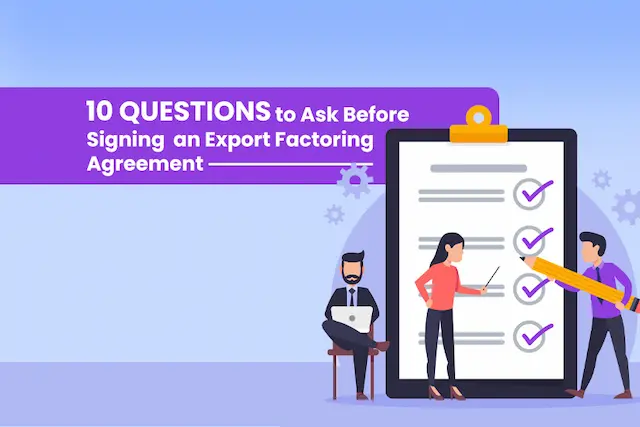When it comes to selling products within a local area, things often flow smoothly – exchanges happen without much hassle. However, crossing borders with your business requires a good grasp of export and import rules to ensure legal compliance and success.
Imagine you get an order from an importer – it could be in the form of an agreement, invoice, purchase order, or letter of credit. But here’s the catch: before you start making or sourcing the goods to export, you need solid paperwork in place. This ensures clarity and legal compliance from the get-go.
Now, let’s dive into a list of tips that’ll guide you through the process of dispatching an export order. By following these guidelines, you’ll not only provide your customers with the best value but also make working with you a seamless and satisfying experience.
Also Read: Everything About Export Finance Scheme
Steps You Must Follow While Dispatching an Export Order

Here are some of the most important tips that you must follow while you are all set for your export order:
Step 1 – Checking and Confirming the Order
Before moving forward with making or getting the products, it’s super important to carefully look over and agree to the order details. This means going through everything written down in the agreement with the importer. You’ll want to double-check what exactly you’re supposed to send, how it’s going to be shipped, when you’ll get paid, and what insurance you might need.
Once you’re sure everything looks good and fair, confirming the order gives the green light to start making or getting the stuff ready to send off. It’s like making sure all the puzzle pieces fit together before you start building the puzzle.
Step 2 – Production or Procurement
Now that the order is a go, the next big step is getting the stuff ready to send out. This means either making the products or getting them from somewhere else. To do this, you might need some extra cash upfront. Luckily, you can ask banks or other money places for something called pre-shipment credit. This money helps cover the costs of getting the materials you need and making the products. Once you’ve got the cash, it’s time to start making or getting the goods.
You’ll get everything ready, pack it up nice and safe, and then it’s good to go for shipping overseas. It’s like gathering all the ingredients and cooking up a delicious dish before serving it to your hungry customers.
Step 3 – Central Excise Clearance
Now comes the part where you can get some money back on the excise duty you paid for your export order. It’s like getting a refund on a tax you’ve already paid. There are two ways to go about it: you can either pay the full duty before sending out your stuff and then ask for a refund after it’s shipped, or you can make a deal with the excise folks to pay later.
If you choose the second option, you’ll need to fill out some forms and get clearance from the Central Excise Range Superintendent. Once your shipment is on its way and you’ve shown proof, like a shipping document, that everything’s been sent out, you can get your refund. It’s like getting back some money you spent on taxes, which can definitely come in handy!
Step 4 – Pre-Shipment Inspection
Before your goods head out for shipping, they need a thorough once-over by certified inspectors. It’s like making sure everything’s in tip-top shape before you send it off. These inspectors check everything to make sure it meets the quality standards set by the government. For some products, like really important ones, getting a Pre-shipment Inspection (PSI) certificate is a must. Once your goods pass inspection, you’ll get this certificate.
Then, you’ve got to show it to the customs folks, send a copy to the importer, and keep one for yourself. It’s kind of like having your seal of approval that everything’s good to go. Plus, it gives everyone peace of mind knowing that the stuff being shipped is top-notch quality and meets all the standards.
Step 5 – Clearing and Forwarding Agents
Okay, so once your goods are all set to go, it’s time to get them to the port. This is where clearing and forwarding (C&F) agents come in handy. Think of them as the superheroes of logistics – they handle all the nitty-gritty stuff to make sure your goods reach their destination smoothly. From packing and labeling to arranging transportation, these agents take care of it all.
Plus, they’re experts at dealing with paperwork. They know exactly what documents you need for customs clearance and transportation, so you don’t have to worry about anything. With C&F agents on your side, exporting becomes a breeze. They make sure everything’s in order, so you can focus on growing your business and making those big deals happen.
Step 6 – Reservation of Shipping Space
Your goods are all packed up and ready to go. Now, it’s time to make sure there’s a spot for them on the ship. This step is super important because without a reserved space, your goods might get left behind. Luckily, you’ve got options. You can either ask your C&F agent to handle it for you, or you can contact the shipping company directly. Once the space is secured, you’ll get something called a shipping order – kind of like a golden ticket for your goods.
This document proves that you’ve got a spot reserved, so there won’t be any confusion when it’s time to load up the ship. With shipping space reserved, you can rest easy knowing that your goods are on their way to their destination, right on schedule.
Step 7 – Paperwork and Final Checks
So, you’ve got your shipping space all sorted out, but there’s still some important paperwork to take care of before your goods set sail. Once your consignment arrives at the port, your agents swing into action. They make sure all the necessary paperwork is in order and get clearance from the port authorities for your goods to enter the shipment shed. Then comes the fun part – document verification and the issuance of port trust documents.
These documents basically give the green light for your goods to move forward in the export process. But wait, there’s more! Before your goods can officially be dispatched, they undergo a thorough physical inspection by port appraisers to ensure everything is shipshape. Once all the paperwork is done and dusted, your goods are cleared for dispatch to the transit sheds, getting one step closer to reaching their destination.
Step 8 – Post-Dispatch Formalities
Congratulations, your goods are officially on their way! But before you celebrate, there are a few more things to take care of. Now that your consignment has been shipped, it’s time to gather all the necessary documents to claim any export incentives or tax rebates you’re entitled to. These documents include details about your consignment, shipping information, and records of taxes paid on inputs. You’ll need to submit these documents to the customs department to ensure you get the benefits you deserve.
But that’s not all – it’s also important to keep your importer in the loop. Sending them shipment advice with an estimated delivery time helps them prepare to receive the goods. This open line of communication ensures transparency and smooth coordination, making the delivery process a breeze for both parties involved.
Successfully navigating the export process demands attention to detail and a structured approach. By adhering to the outlined steps, exporters ensure legal compliance, maintain product quality, and streamline logistical operations. From confirming order details to post-dispatch formalities, each step is integral to the seamless execution of export orders. Moreover, collaborating with proficient professionals like clearing and forwarding agents simplifies the process, alleviating any complexities.
Ultimately, prioritizing transparent communication with importers and meticulous paperwork guarantees a smooth and satisfactory experience for all involved in international trade. With these guidelines at hand, exporters can confidently explore global markets and capitalize on lucrative opportunities.
Also Read: What is Export Finance in International Marketing?





